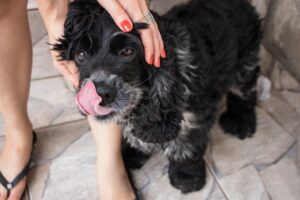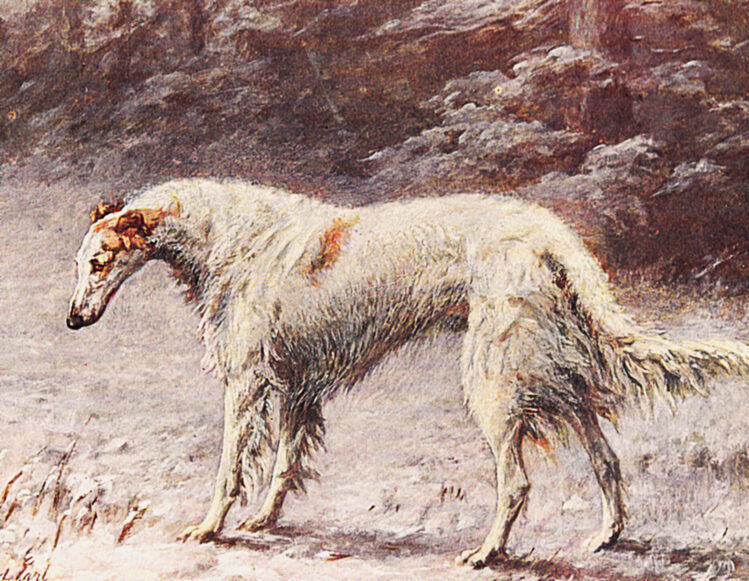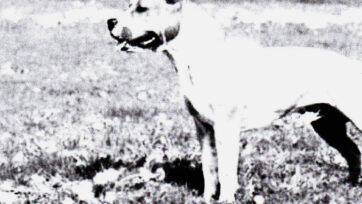
DOGS CAN HAVE EYE PROBLEMS JUST LIKE US
WE ARE THE CAREGIVERS FOR OUR DOGS SO WE MUST PAY ATTENTION TO THEIR EYES
Maybe it’s not a dog’s most used sense but they too can have eye problems. And it is another important way for them to interact with their environment. Their eyes should have a general routine of checkups with your vet just as other health issues due.
FOUR OF THE MOST COMMON EYE PROBLEMS IN DOGS
EYE INFECTIONS
Dogs can get eye infections a number of ways such as something with bacteria getting into the eyes. They can even get an infection for another dog they come in contact with.
Some of the signs your dog is having an eye problems are:
- Excessive crying
- Whining
- Sensitive to light
- Redness
- Green or Yellow discharge
A discharge can crust over their eyes. Some breeds prone to eye infections include cocker spaniels, Maltese, Pekingese, poodles, pugs, and Shih-Tzus.
CATARACTS
Mainly a genetic condition that makes the lens of your dog’s eye appear increasingly white or cloudy, coinciding with a progressive deterioration in his vision and maybe eventually blindness.
All breeds can develop cataracts and it’s possible to get them from disease, immune problems, or injury. But some breeds are more prone to get them than others. Some of the breeds are:
-
- American cocker spaniel
- Bichon Frise
- Boston Terrier
- Havanese
- miniature schnauzer
- miniature and standard poodle
- silky terriers
- smooth fox terriers
IN-GROWN EYELIDS
Known as entropion this condition leads to your dog’s eyelids actually growing or rolling inwards. This leads to rubbing against the cornea and causing damage and discomfort.
Even though it can occur in any dog, entropion is a leading health concern in breeds such as:
- Akita
- American Staffordshire terrier
- bloodhound
- Chinese Shar-Pei
- chow chow
- English bulldog
- English mastiff
- Great Dane
- Neapolitan mastiff
- Rottweiler
- spaniel
- vizsla
- Weimaraner
THIRD EYELID PROLAPSE
Maybe you didn’t know this but every dog has a third eyelid. The gland of this eyelid protects the cornea by secreting tears. Sometimes, though, this gland can become swollen and exposed.
When this happens, you may see yellow mucus indicating the irritation. Brachycephalic or “flat-faced” breeds like the Pekingese, pug, and Shih-Tzu commonly have this problem.
WHAT TO DO
These problems most likely will require a veterinary consultation and specific treatments to solve the issue, but there are still a number of things you can do to keep your dog’s eyes healthy and to catch potential problems early on.
GAZE INTO THEIR EYES
Check the dog’s eyes regularly by taking her to a bright area and looking for crust, discharge, or tearing, and making sure that there’s white around the eyeball.
Look for cloudiness, unequal pupil sizes, a visible third eyelid, a change in eye color, closed eyes, or rubbing of the eyes. Any of these means a trip to your veterinarian.
CHECK THE LINING
While you’re there, look at the inner lining of your dog’s eyelid by rolling the lid down. You want it to be pink, not white or red.
CLEAN THE EYES OUT
Keep the dog’s eyes free of gunk and crustiness by using a damp cotton ball and wiping outward from the corner of her eye, being careful not to scratch the cornea. Use dog eyewash if you see redness, which is common during dry winters.
KEEP YOUR DOG CLIPPED
Long hair can scratch and poke your dog’s eyes, so trim those bands using round-tip scissors.
CLOSE THE WINDOWS
While dogs love sticking their head out car windows, wind and debris can actually cause serious eye problems.
IN CONCLUSION
Our eyes are important to us and so are your dog’s eyes. So be careful of them and always be on the watch for your dog to be signaling to you for help. On visits to your vet make sure the eyes are checked out too, just like everything else.

